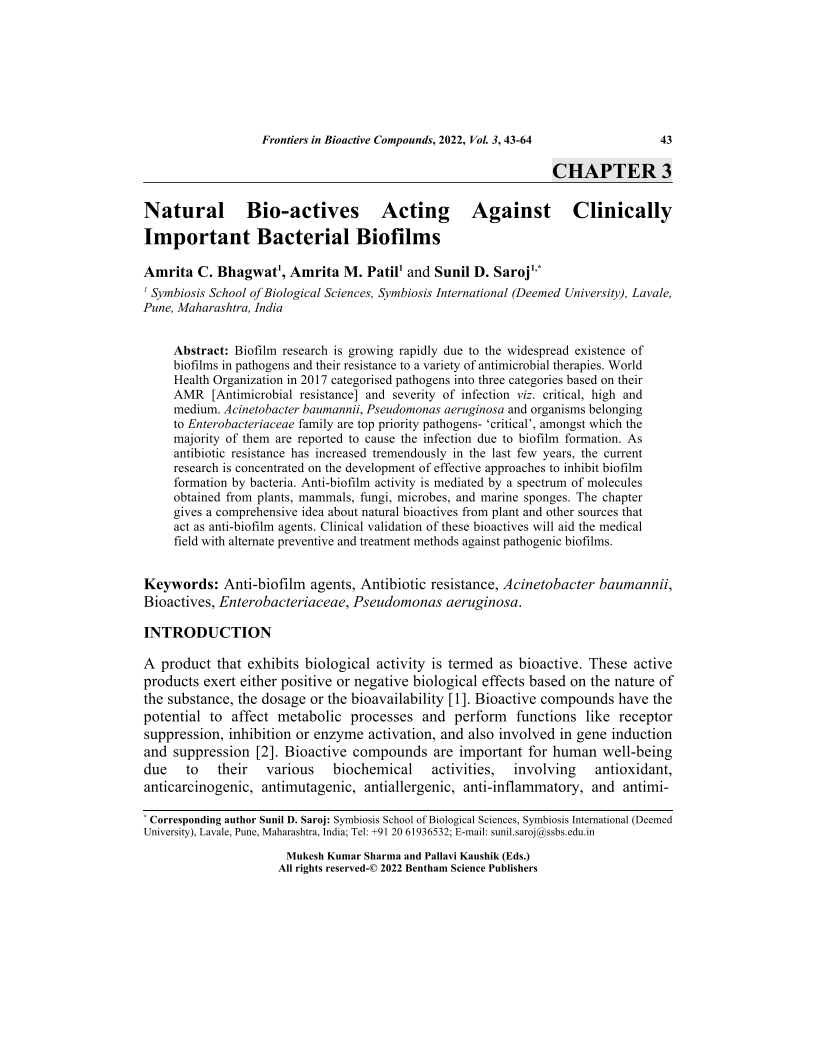Natural Bio-actives Acting Against Clinically Important Bacterial Biofilms

- Authors: Amrita C. Bhagwat1, Amrita M. Patil2, Sunil D. Saroj3
-
View Affiliations Hide Affiliations1 Symbiosis School of Biological Sciences, Symbiosis International (Deemed University), Lavale, Pune, Maharashtra, India 2 Symbiosis School of Biological Sciences, Symbiosis International (Deemed University), Lavale, Pune, Maharashtra, India 3 Symbiosis School of Biological Sciences, Symbiosis International (Deemed University), Lavale, Pune, Maharashtra, India
- Source: Therapeutic Implications of Natural Bioactive Compounds , pp 43-64
- Publication Date: September 2022
- Language: English
Natural Bio-actives Acting Against Clinically Important Bacterial Biofilms, Page 1 of 1
< Previous page | Next page > /docserver/preview/fulltext/9789815080025/chap3-1.gif
Biofilm research is growing rapidly due to the widespread existence of biofilms in pathogens and their resistance to a variety of antimicrobial therapies. World Health Organization in 2017 categorised pathogens into three categories based on their AMR [Antimicrobial resistance] and severity of infection viz. critical, high and medium. Acinetobacter baumannii, Pseudomonas aeruginosa and organisms belonging to Enterobacteriaceae family are top priority pathogens- 'critical', amongst which the majority of them are reported to cause the infection due to biofilm formation. As antibiotic resistance has increased tremendously in the last few years, the current research is concentrated on the development of effective approaches to inhibit biofilm formation by bacteria. Anti-biofilm activity is mediated by a spectrum of molecules obtained from plants, mammals, fungi, microbes, and marine sponges. The chapter gives a comprehensive idea about natural bioactives from plant and other sources that act as anti-biofilm agents. Clinical validation of these bioactives will aid the medical field with alternate preventive and treatment methods against pathogenic biofilms.
-
From This Site
/content/books/9789815080025.chap3dcterms_subject,pub_keyword-contentType:Journal -contentType:Figure -contentType:Table -contentType:SupplementaryData105

